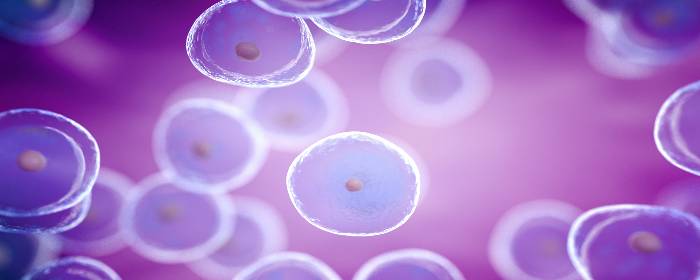
by Stemedix | Nov 20, 2023 | Studies, Age Management, Alzheimer’s Disease, Health Awareness
What you eat has a huge impact on your overall health, including your cognitive function. Your brain is a powerhouse that needs a constant influx of nutrients to function at its best, and some foods offer more of those nutrients than others. By adding the right foods to your diet, you can give your brain the boost it needs.
1. Fatty Fish for Omega-3
Eating fatty fish like salmon, sardines, and mackerel offers your brain a good dose of omega-3. Omega-3 is critical for normal brain function as well as for its development throughout all of the stages of life.
This fatty acid is present in the membranes of brain cells, making communication between them easier while also preserving them. Omega-3 also shows promise in improving brain function in people with memory problems, including Alzheimer’s, as well as those with mild cognitive impairment.
2. Leafy Greens for B Vitamins
Leafy greens like broccoli, spinach, and kale contain a large amount of B vitamins. These vitamins are essential for your brain health, helping boost the production of neurotransmitters, which are chemicals that deliver messages between neurons. Vitamin B9 helps with intracellular detoxification, as well as improving low moods.
Leafy greens also add iron to your diet, which you need for energy. The brain uses more energy than any other organ, so encouraging healthy red blood cells by eating more iron is essential for its proper function.
Another benefit of leafy greens is they are packed with antioxidants, boosting cognitive function, mood, decision-making abilities, and so much more. They can do this by reducing or eliminating free radicals that cause damage.
3. Berries for Reducing Cell Damage
Berries are full of flavonoids, including flavanol, which have anti-inflammatory and antioxidant properties that protect brain cells. Anthocyanins, which you find in red, blue, and purple berries, can cross the blood-brain barrier. They can protect the brain from diseases like cancer.
Eating blueberries increases blood flow to many areas of the brain, including those that control memory. The aging process can also slow down when you regularly add berries to your diet. This is because berries help create new neurons in the brain. Berries are also able to reduce inflammation and make nerve cells more flexible.
4. Whole Grains for Energy
Whole grains offer the energy your brain needs to stay healthy and function at its best. The fibers present in whole grains also aid in controlling blood pressure and reducing the chances of developing brain inflammation.
Whole grains are also rich in vitamin E, which helps the brain remain flexible throughout life. It has the potential to help people who have mild to moderate Alzheimer’s because of the way it reduces oxidative stress.
Vitamin E also helps regulate DHA; a type of omega-3 fatty acid crucial for brain function. In the brain, DHA forms DHA-PC, which is a component of neuron membranes. People with Alzheimer’s tend to have low levels of DHA-PC, so turning to vitamin E holds promise in its treatment.
5. Seeds and Nuts for Anti-Aging Properties
Seeds and nuts are full of nutrients, including zinc, which is important for memory enhancement. Walnuts offer great levels of omega-3 fatty acids to improve memory and brain function.
Many seeds and nuts are also full of vitamin E, which protects nervous cell membranes by targeting free radicals. Some seeds and nuts, like sunflower seeds, contain high levels of B vitamins, which are necessary for the production of neurotransmitters and the creation of cell structures.
6. Dark Chocolate for Antioxidants
Cocoa powder and dark chocolate are full of antioxidants like flavonoids, which gather in the parts of the brain that deal with memory and learning, helping slow mental decline. Chocolate is also a mood booster.
The flavonoids in chocolate improve blood flow to the brain as well. Chocolate also contains stimulating substances like caffeine and theobromine, which give brain function a short-term boost.
7. Oranges for Vitamin C
Oranges are rich in vitamin C, a key vitamin for preventing mental decline. Vitamin C helps boost memory, concentration, and decision speed while also helping fight off free radicals that cause damage to brain cells. Because of this, eating fruits and food options that are high in vitamin C can protect against conditions like Alzheimer’s.
Another way vitamin C helps the brain is by helping the process of forming new neurons, which is essential for memory and overall cognitive resilience.
Vitamin C helps with the formation of myelin sheaths that protect the neurons while also ensuring blood vessel integrity. This allows for better blood flow to the brain. It’s also necessary to convert serotonin into dopamine, making it essential for mood stabilization.
8. Eggs for Choline
Egg yolks offer a concentrated amount of choline, which is a micronutrient your body relies on to create acetylcholine. Acetylcholine is a neurotransmitter that regulates memory and mood. Higher intakes of choline are linked to better cognitive function and memory.
Eggs are also rich in folate. Folic acid shows promise in being able to minimize age-related mental decline. You also get vitamin B12 from eggs, which you need to synthesize brain chemicals while also regulating sugar levels in the brain.
Vitamin B12 is necessary for the formation of red blood cells and the normal functioning of the nervous system. Those with vitamin B12 deficiencies have an increased risk of cognitive impairment.
Helping Boost Your Brain’s Function
Ensuring you are getting the right nutrition is vital for all parts of your body, including your brain. By incorporating foods that provide antioxidative and anti-inflammatory benefits, free radicals have a harder time causing damage to brain cells. Additionally, including foods that offer B vitamins to your diet helps with the formation of neurons.
People with dietary problems sometimes may not have access to all the nutrients they need, which is why turning to vitamin infusions and oral supplements makes a difference. You can give your brain what it needs with minimal effort and without triggering allergies or other sensitivities.

by Stemedix | Sep 14, 2020 | Ozone Therapy, Age Management
Ozone therapy is an umbrella term for the medical and aesthetic treatments which implement ozone, a gas with three oxygen atoms instead of two. The powerful agent has been studied for the treatment of numerous conditions and concerns, including age-related factors. Here we are going to talk about the anti-aging power of Ozone Therapy.
The Anti-Aging Power of Ozone Therapy is drawing attention in the anti-aging sphere, thanks to the availability of treatment and its ability to treat the root causes associated with many concerns of aging. For instance, the risk of chronic conditions such as rheumatic disease, diminished immune response, high blood pressure, and certain types of cancer increases as we age. In many cases, these conditions can be traced to a reduced oxygen supply, but increasing the body’s oxygen levels through ozone therapy may help to prevent them. Moreover, ozone therapy offers compelling benefits such as increased energy and overall rejuvenation.
How Does Ozone for Anti-Aging Work?
Ordinarily, oxygen has two atoms. When it passes through an electric coil, it separates into three atoms and becomes ozone. When administered to the body, ozone can target and destroy harmful agents such as viruses and bacteria. Once its work is complete, it reverts to oxygen, increasing overall oxygenation.
Ozone gives the body the nutrients it needs to perform its best, increasing healing activities in the following key ways:
- Improved circulation and oxygen supply
- Liver detoxification
- Reduced uric acid
- Decreased cholesterol and triglycerides
- Improved white blood cell activity
- Improved cellular metabolism
There are several methods to apply ozone therapy, including topically and via injection. If you’re considering this treatment option, be sure to find an experienced clinic that thoroughly assesses your medical history and discusses the potential benefits of the treatment for your specific concern. Contact a Care Coordinator today for a free assessment!

by admin | Dec 30, 2019 | Stem Cell Therapy, Adipose, Age Management, Mesenchymal Stem Cells, Stem Cell Research
Autologous stem cell treatments offer several advantages over other forms of stem cell treatment. In autologous stem cell treatment, a patient’s own stem cells are retrieved, processed, and injected back into the patient’s body. There is no need for a stem cell donor, and the entire procedure can take place in the same medical office. Since the patient’s own cells are used for an autologous stem cell treatment, there is no risk of disease transmission from a donor (because there is no donor) and no risk of rejection (because they are the patient’s own stem cells). Autologous stem cell treatments has some major benefits for the elderly.
Unfortunately, younger stem cells are better for
regenerative medicine than older stem cells are. Moreover, older people have
fewer stem cells that can be harvested than they did when they were younger. So
while autologous stem cell treatment is still advantageous, it becomes more difficult
to achieve as patients get older because their stem cells are fewer and less potent.
Making matters worse, older stem cells compete against more youthful stem
cells, making autologous stem cell treatments potentially even less effective
in older patients.
Fortunately, stem cell researchers are coming up with ways to make the most out of the stem cells that older patients still have. They still take a sample of tissue, such as fat, and harvest the stem cells contained within it. However, instead of injecting all stem cells from the sample (both older and youthful stem cells), researchers select and use only youthful stem cells. Furthermore, they make the treatments even more effective by injecting other substances (e.g. extracellular matrix) that help youthful stem cells survive, grow, and thrive.
To demonstrate the effectiveness of their approach,
researchers collected mesenchymal
stem cells from about a dozen older individuals aged 65 to 86 years old.
They then assorted the stem cells into different groups, separating youthful
from older stem cells. They then used special factors to help the youthful stem
cells grow, increasing the numbers by an impressive 17,000 times. So while only
8% of stem cells produced by older individuals are “youthful,” this laboratory
process increased those numbers to a point that they can be used for stem cell
treatments—even stored for future use!
The next phase of the research will be to inject these youthful stem cells into older patients and assess their effectiveness. However, even these preliminary results are exciting because they suggest that people of all ages can potentially benefit from autologous stem cell treatments, not just middle age and younger individuals.
Reference: Block, TJ et al. (2017). Restoring the quantity and quality of elderly human mesenchymal stem cells for autologous cell-based therapies. Stem Cell Research & Therapy. 2017 Oct 27;8(1):239.

by admin | Dec 27, 2019 | Health Awareness, Aesthetics, Age Management, Skin Care
Maintaining healthy, luminous skin isn’t impossible, but it does require some self-care. Fortunately, many of these steps are quick, simple, and can be introduced easily into your daily routine. And, because many of the strategies to boost skin wellness also go hand-in-hand with overall healthy habits, you may even see some other benefits as a result. Here are some of the most powerful ways to improve your skin’s health naturally. Here are 7 beauty tips for naturally vibrant skin.
Always Remove Your Makeup
Your skin needs to breathe while you’re resting, but makeup
can clog your pores and prevent it from getting the air it needs. To keep
imperfections like blackheads and blemishes at bay always remove your makeup
every night before bed – no exception. If you don’t have time to wash your face
entirely, at least use a cotton pad and olive oil to gently remove lingering
cosmetics.
Get Plenty of Wholesome Nutrients
Every system in your body requires proper nutrition to
function its best, and your skin is no different. Foods
rich in healthy fats, including fatty fish, avocadoes, and nuts, are
especially powerful for keeping skin hydrated and supple. Nutrient-rich foods
like vegetables, fruit, and lean protein will also help round out a
skin-healthy diet.
Exercise Regularly
Exercise
increases blood flow, which helps to boost skin health. When you get
active, circulation increases, which carries essential nutrients to the skin.
Plus, increased blood flow also helps to carry away waste such as free
radicals, which could otherwise exacerbate the signs of aging.
Stay Hydrated
Every single cell in your body requires water
– especially your skin cells. Your skin is an organ made up of water, and
without enough hydration, it can begin to look flaky, dull, and aged. Be sure
to get at least glasses a day to keep your skin looking its best.
Sleep Soundly
The signs of a poor night’s sleep are likely to show up on
your skin immediately, in the form of puffy eyes or undereye bags. Yet, a
pattern of bad sleep can also take its toll on your skin. Because cells
regenerate during sleep, getting ample rest is essential to fighting the signs
of aging. Aim for at least eight hours of shut-eye each night to promote a
natural glow.
Keep Your Skin Moisturized
Dry skin loses its elasticity and makes it easier to spot
fine lines and wrinkles. For this reason, you should be applying a gentle
moisturizer every morning and evening. Look for one with natural,
non-irritating ingredients, especially if you have sensitive skin.
Never Skip Sunblock
The final but most important rule for maintaining healthy skin is to apply sunblock each and every day. Even if you’re only outdoors briefly, UV damage can add up, and will eventually lead to wrinkles, sun spots, and other signs of aging. Make sure your moisturizer has an SPF of 30 or higher, and that it can block out both harmful UVA and UVB rays to keep your skin not only safe, but healthy-looking.

by admin | Oct 23, 2019 | Age Management, Stem Cell Research, Stem Cell Therapy
Autologous stem cell treatments offer several advantages over other forms of stem cell treatment. In autologous stem cell treatment, a patient’s own stem cells are retrieved, processed, and injected back into the patient’s body. There is no need for a stem cell donor, and the entire procedure can take place in the same medical office. Since the patient’s own cells are used for an autologous stem cell treatment, there is no risk of disease transmission from a donor (because there is no donor) and no risk of rejection (because they are the patient’s own stem cells).
Unfortunately, younger stem cells are better for regenerative medicine than older stem cells are. Moreover, older people have fewer stem cells that can be harvested than they did when they were younger. So while autologous stem cell treatment is still advantageous, it becomes more difficult to achieve as patients get older because their stem cells are fewer and less potent. Making matters worse, older stem cells compete against more youthful stem cells, making autologous stem cell treatments potentially even less effective in older patients.
Fortunately, stem cell researchers are coming up with ways to make the most out of the stem cells that older patients still have. They still take a sample of tissue, such as fat, and harvest the stem cells contained within it. However, instead of injecting all stem cells from the sample (both older and youthful stem cells), researchers select and use only youthful stem cells. Furthermore, they make the treatments even more effective by injecting other substances (e.g. extracellular matrix) that helps youthful stem cells survive, grow, and thrive.
To demonstrate the effectiveness of their approach, researchers collected mesenchymal stem cells from about a dozen older individuals aged 65 to 86 years old. They then assorted the stem cells into different groups, separating youthful from older stem cells. They then used special factors to help the youthful stem cells grow, increasing the numbers by an impressive 17,000 times. So while only 8% of stem cells produced by older individuals are “youthful,” this laboratory process increased those numbers to a point that they can be used for stem cell treatments—even stored for future use!
The next phase of the research will be to inject these youthful stem cells into older patients and assess their effectiveness. However, even these preliminary results are exciting, because they suggest that people of all ages can potentially benefit from autologous stem cell treatments, not just middle age and younger individuals.
Reference: Block, TJ et al. (2017). Restoring the quantity and quality of elderly human mesenchymal stem cells for autologous cell-based therapies. Stem Cell Research and Therapy. 2017 Oct 27;8(1):239.

by admin | Oct 9, 2019 | Stem Cell Research, Age Management, Stem Cell Therapy
Frailty is a syndrome of weight-loss, exhaustion, weakness, slowness, and decreased physical activity. These features combine to make frail individuals more susceptible to physical, psychosocial, and cognitive impairments. Unfortunately, frailty is rather common among elderly individuals. In one study of over 44,000 elderly adults living in the community estimated the overall prevalence of frailty was 10.7%. While the risk of becoming frail increases with old age, frailty is not a normal part of aging. Instead, the syndrome of frailty is driven by biological processes such as inflammation and stem cell dysfunction.
No specific treatment can prevent or reverse frailty. Indeed, the goal of treatment is to maximize the patient’s functional capacity and overall health. The most widely accepted way to manage frailty is a multimodal and multidisciplinary approach. Frail individuals or those at risk for becoming frail are encouraged to participate in strength training and aerobic exercise to build up a cardiovascular reserve and physical fitness. At the same time, substantial efforts are devoted to helping patients consume enough calories to maintain lean muscle and support their immune function. As appetite diminishes, malnutrition can become an issue, so supplemental nutrition may be needed. Physicians can help patients by optimizing medical treatments and reducing the total number of medications prescribed (i.e. avoiding polypharmacy).
Despite these multimodal treatments, most frail patients tend to get worse over time. One hope of treatment is to slow the rate of decline; however, this is not always possible.
Since frailty is driven by stem cell dysfunction, a reasonable way to prevent or treat frailty could be to provide patients with healthy stem cells. Researchers recently conducted a randomized, double-blind, clinical trial in 30 elderly patients with frailty. Frail patients received an IV infusion of either human mesenchymal stem cells or placebo. The researchers then followed the patients for 6 months to assess the safety and efficacy of the stem cell treatment.
Stem cell treatment resulted in a rather remarkable set of benefits for frail patients. Compared to placebo, patients treated with stem cells performed significantly better on tests of physical strength and stamina. Stem cell-treated patients used calories more efficiently, which is a sign that they were more physically fit than those in the placebo group. Moreover, patients who received stem cells had better lung function at the end of the trial than those in the control group. Interestingly, women who received stem cell treatment reported a substantial increase in sexual quality of life compared to those in the placebo group. Lastly, no patients experienced any treatment-related serious adverse events.
When one considers how difficult it is to treat frailty or even alter its progressive decline, these results are remarkable. Stem cell treatment not only stopped the progression of frailty, but patients actually improved in several important measures including physical strength, physical endurance, lung function, and sexual quality of life. We anxiously await a pivotal clinical trial to confirm these results.
Reference: Tompkins, BA. (2017). Allogeneic Mesenchymal Stem Cells Ameliorate Aging Frailty: A Phase II Randomized, Double-Blind, Placebo-Controlled Clinical Trial. The Journals of Gerontology, Series A, Biological Sciences and Medical Sciences. 2017 Oct 12;72(11):1513-1522.







 St. Petersburg, Florida
St. Petersburg, Florida
